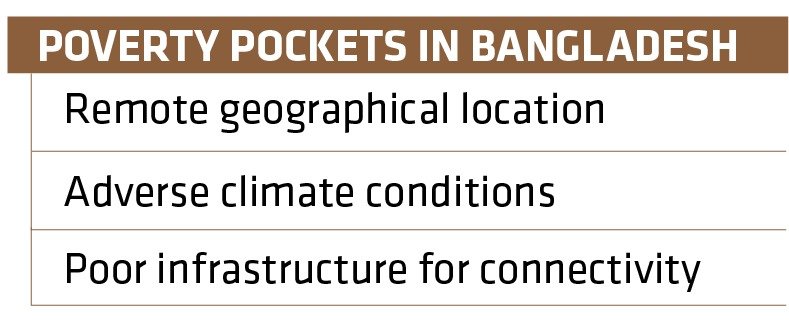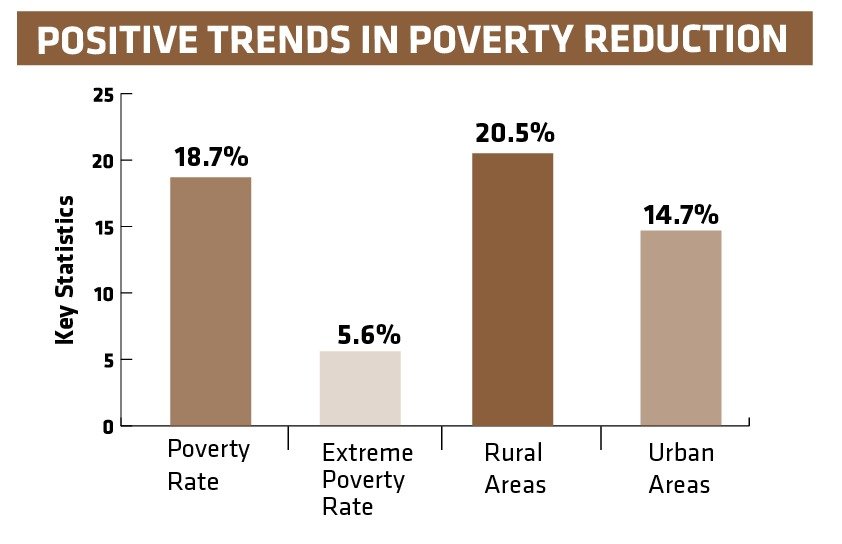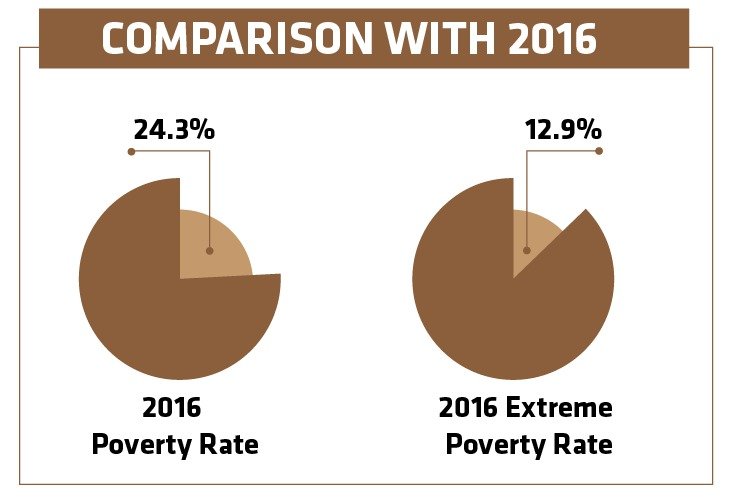In the past 13 years, Prime Minister Sheikh Hasina’s government has strived to establish a safety net for the impoverished and has achieved this goal
The International Day for the Eradication of Poverty, observed annually on October 17th, brings together over a hundred thousand individuals at the Trocadéro in Paris, where the Universal Declaration of Human Rights was signed in 1948. These gathering pays homage to those who have endured extreme poverty, violence, and hunger. It resolutely asserts that poverty is a fundamental violation of human rights, resonating a strong call to collective action, underscoring the necessity of safeguarding these rights. Since that historic juncture, people from various backgrounds, beliefs, and social origins have convened on October 17th each year.
You can also read: Bangladesh’s Rice Revolution: Record Crop Fuels Economic Hopes
Eradicating poverty is an ambitious and ongoing endeavor, but it is one that must be pursued relentlessly. The International Day for the Eradication of Poverty serves as a reminder that poverty is not an inevitable part of our world, and with the right policies, resources, and determination, we can work towards a more equitable and just society where everyone has the opportunity to live a life free from poverty and its many associated hardships.
Global Perspective on Pockets of Poverty
In the realm of global poverty reduction, the progress made since the turn of the century has been commendable. However, the uneven distribution of poverty remains a pressing issue. For instance, while developing countries have witnessed substantial strides in poverty reduction, the vast majority of the world’s extreme poor still reside in regions south of the Sahara in Africa and southern Asia. In 1990, approximately 50% of the population in Sub-Saharan Africa and South Asia, and two-thirds in East Asia and the Pacific, were grappling with extreme poverty, defined as subsisting on less than the equivalent of about $2.15 per person per day in today’s terms.
Over the subsequent three decades, these regions took distinct developmental trajectories. By 2019, the proportion of people in extreme poverty had dwindled to 35% in Sub-Saharan Africa, in contrast to 9% in South Asia and a mere 1% in East Asia and the Pacific.
Surprisingly, poverty persists in middle- and high-income countries as well. Even in the United States, despite extensive welfare reforms, pockets of poverty are increasingly found in its southern and southeastern states. Developed countries are not immune either, as the UN-Habitat expresses deep concern about the emergence of poverty pockets within their cities.
Bangladesh Scenario
Bangladesh, a country that has made commendable strides in poverty reduction throughout the 2000s, offers an illustrative case study. The nation has significantly reduced both moderate and extreme poverty, with an extreme poverty rate of 5.6 percent as of now. However, at the district level, certain areas consistently feature in high-poverty lists despite national progress.
The factors underpinning poverty pockets in Bangladesh are multifaceted, interconnected, and can be categorized into primary and tertiary factors. Primary factors are those that play a causal role in shaping tertiary factors.
- Remote geographical location
- Adverse climate conditions and
- poor infrastructure for connectivity, these primary factors play a causal role in the formation of poverty pockets, while the rest can be considered as tertiary factors that exacerbate the situation. The relationship between these factors is intricate, but the key aspects often circle back to remote geographical locations, unfavorable climate conditions, and inadequate infrastructure for connectivity.

Poverty Reduction in Bangladesh
In recent years, Bangladesh has achieved remarkable progress in its fight against poverty. This decline in poverty rates can be attributed to the country’s unwavering commitment to poverty reduction initiatives. The government has placed a strong emphasis on poverty alleviation and has committed to eliminating poverty through strategic economic development.
Back in 2009, when the current government took office, approximately 50 million people in the country were living in poverty, with 28.8 million in extreme poverty. Despite an average population growth rate of 1.16 percent during the government’s previous term, the number of people living in poverty and extreme poverty decreased significantly to around 38.05 million and 15.07 million, respectively (Source: Ministry of Finance). Over the past 22 years, a substantial number of the extreme poor have managed to rise above the poverty line. Notably, 45 percent of these extreme poor individuals have transitioned out of poverty within the last 5 years.


Data from Bangladesh Bureau of Statistics
The most recent data from the Bangladesh Bureau of Statistics (BBS) reveals that the poverty rate in Bangladesh has fallen to 18.7 percent, with the extreme poverty rate standing at 5.6 percent. These figures were derived from the key findings of the Household Income and Expenditure Survey 2022, indicating rates of 20.5 percent in rural areas and 14.7 percent in urban areas.
This significant update comes with the release of the “Household Income and Expenditure Survey – 2022” by the national statistical agency. In comparison to the 2016 survey, where the poverty rate was 24.3 percent and the extreme poverty rate was 12.9 percent, the latest data demonstrates a reduction in poverty across the country.
Once Planning Minister MA Mannan noted that, “The decline in the poverty rate is a noteworthy achievement, which has been praised by the Prime Minister. She takes great pride in the country’s accomplishments, particularly during the challenging times of the pandemic. Her elation is evident.”
In conclusion, Under the leadership of Prime Minister Sheikh Hasina, the government in the last 13 years has tried to create a social security net for the poor and succeeded to a great extent. The government has also undertaken measures to regulate market prices, aiming to alleviate the burden on the poor. The government also remains steadfast in its commitment tothrough the implementation of various social safety net programs.
Even in the face of concerns about economic stagnation, Bangladesh has admirably maintained a trajectory of growth and recovery when compared to many other nations. While major economies, including the United States, have struggled to achieve a GDP growth rate exceeding 3 percent, Bangladesh has consistently maintained a growth rate of over 6 percent. This remarkable accomplishment can be attributed to the visionary leadership of Prime Minister Sheikh Hasina.


